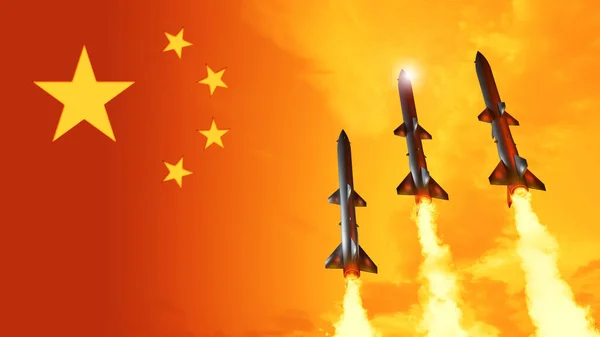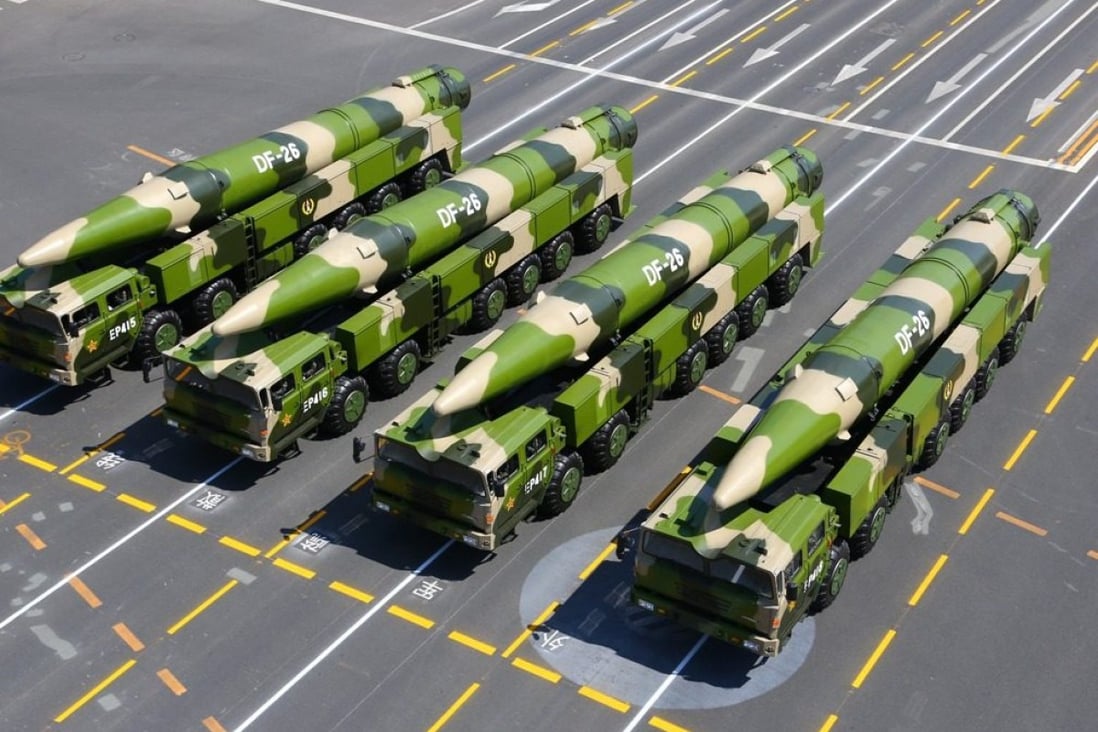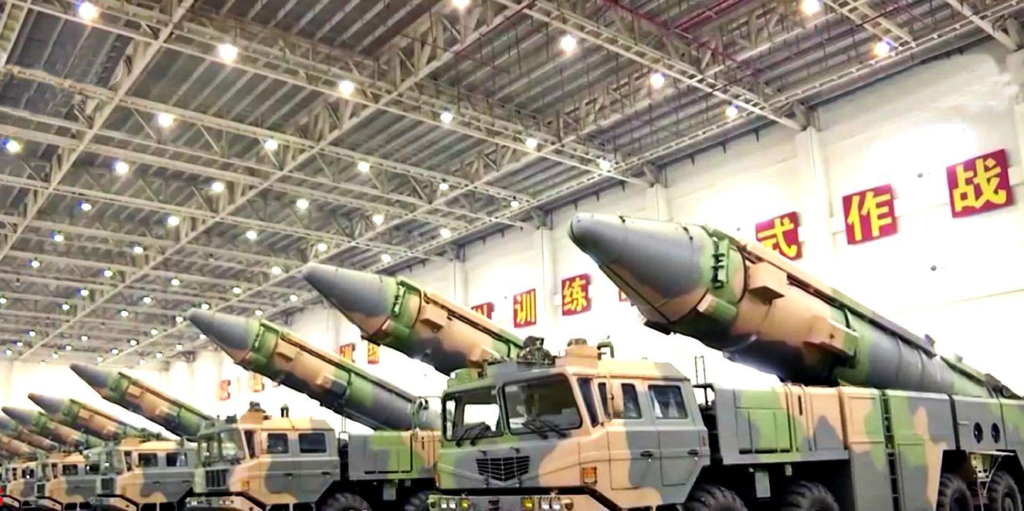
A senior US Navy commander had highlighted the danger posed by the rocket force of China’s People’s Liberation Army or PLARF, calling it the topmost threat faced by the US Navy in the Indo-Pacific region.
Advertisement
During an interview with CBS, Admiral Samuel Paparo, who holds the rank of four-star admiral in the United States Navy and currently serves as the 64th commander of the United States Pacific Fleet, said China is utilizing its extensive 9,000-mile coastline to redefine the principles of naval warfare.
The admiral said the Chinese military invested heavily in state-of-the-art long-range precision-guided weapons, specifically the DF-21 and DF-26. These advanced weapons systems possess a formidable capability to target enemy warships effectively.
The rocket force of China’s People’s Liberation Army has been known to refer to their advanced weaponry as “carrier killers,” indicating the capabilities of these missiles to target and engage US naval aircraft carriers.
Additionally, several reports have surfaced of Chinese military conducting exercises in desert areas, where mockups resembling American ships, particularly the Nimitz-class carriers, have been utilized as targets for practice, according to Admiral Paparo.
Advertisement
When asked about the level of concern regarding the PLA Rocket Force, the US Navy admiral admitted, “I worry. You know, I’d be a fool not to worry about it. Of course, I worry about the PLA Rocket Force.”
He emphasized that the service dedicates daily efforts to formulating effective tactics, techniques, and procedures to counter the threat.
Moreover, he stressed the ongoing development of defensive systems to safeguard against potential attacks from the PLA Rocket Force.
The admiral’s response highlights the seriousness with which the US Navy approaches the challenge posed by China’s missile capabilities. The interview occurred in February aboard the aircraft carrier, the USS Nimitz, deployed near Guam.
In response to the host’s question about the distance between the US Navy aircraft carrier and mainland China, Admiral Samuel Paparo stated, “Fifteen hundred nautical miles.” The anchor expressed concern, asking if they could be hit.
Admiral Paparo affirmed that it was possible, explaining that if the Chinese military had accurate targeting capabilities, they could strike the aircraft carrier. However, he also said the service could employ proactive measures to prevent such an outcome and ensure the carrier’s safety.
The Navy official said that the military strategists are devising strategies to evade China’s rocket force and exploring effective retaliation methods. Given the limitations in range, aircraft deployed from ships near Guam would require aerial refueling to approach Taiwan.
For instance, vessels like the US Destroyer Wayne E. Meyer, part of the Nimitz strike group, would need to maneuver closer to China to launch their missiles against any invading force targeting Taiwan.
However, Admiral Paparo pointed out that the United States can adapt by utilizing agile strategies and advancing the development of longer-range weapons.
Advertisement
PLA Rocket Force (PLARF): A Threat To US Navy
On December 31, 2015, as a significant restructuring initiative within the People’s Liberation Army (PLA), China renamed the PLA Second Artillery Force as the PLA Rocket Force.
Along with the name change, it was elevated from its former status as an independent branch to the level of full service.
This reorganization marked a significant transformation within the PLA’s military structure and highlighted the increased importance and focus placed on the rocket force in China’s strategic capabilities.
Chinese leader Xi Jinping, holding multiple key positions as Chinese Communist Party General Secretary, Central Military Commission (CMC) Chair, and President, has described the PLA Rocket Force as China’s fundamental force for strategic deterrence.
The Rocket Force has consistently received significant backing from the ruling Communist Party, but under the leadership of Xi Jinping, the unit has gained even greater prominence.

Since coming into power in 2012 with a determination to revitalize China as a significant global power, the Rocket Force has actively displayed its missile arsenal, including nuclear and conventional weapons, in various military parades.
In a military parade in Beijing in 2015, the PLA Rocket Force showcased its latest missile advancements, notably the “carrier killer” DF-21D and other cutting-edge weaponry.
To underscore its intent and make an impact on foreign observers, the designations of these formidable missiles were painted in conspicuous white letters on the sides of the projectiles.
Moreover, the parade also offered an opportunity for China to publicly introduce the DF-26 missile, another noteworthy addition to its arsenal.
The DF-26, known as Dong Feng-26, is a Chinese intermediate-range ballistic missile (IRBM) with a range of 4,000 km and can target Guam.
However, Western defense analysts say that China’s deployment of these long-range missiles serves as a deliberate and strategic message and demonstrates Beijing’s resolve and capacity to resist any potential interference.
Beijing aims to signal its expanding influence and determination to protect its interests by showcasing its ability to control vast areas of the South China Sea, intensify naval and air sorties around Taiwan, and extend operations into disputed territories with Japan in the East China Sea.
Advertisement

The country’s missile fleet has experienced significant growth, rendering it more formidable. However, these weapons’ true reliability, accuracy, and payload capabilities have yet to be tested in actual combat.
The communist country has not engaged in warfare since its invasion of Vietnam in 1979. In contrast, the United States possesses a well-established arsenal of air and sea-launched missiles that have repeatedly demonstrated their efficacy through participation in conflicts over the past two decades.
Furthermore, the resilience of the PLA missile systems in the face of potential electronic, cyber, and physical attacks on launch facilities, guidance systems, and command-and-control centers remains uncertain.
It is also unknown whether China has mastered the necessary expertise for a “carrier killer” ballistic missile to detect, track, and strike a moving target at a considerable distance from the Chinese coast.